- Free Resources
- Project Ideas
- Login/Register Remember Me Register


Cultivating Growth Mindset: Problem-Solving Activities for Students Project & Activity Ideas Simulation Activity Educational Tips Cultivating Growth Mindset: Problem-Solving Activities for Students Educational Tips , Project & Activity Ideas , Simulation Activity Cultivating Growth Mindset: Problem-Solving Activities for Students
- by English Teaching 101
Cultivating Growth Mindset with Problem Solving-Skills
As a teacher, we’ve got a super important mission: to plant and nurture the seeds of a growth mindset in our students. It’s like giving them a magic key that unlocks their potential to tackle challenges head-on, keep going when things get tough, and see hard work as their secret weapon to success. And you know what’s at the heart of this? Yep, you guessed it – problem-solving skills. These aren’t just for acing tests; they’re real-life super skills that help our kids navigate the twists and turns of the world out there. So, let’s roll up our sleeves and dive into some fun, creative strategies and activities. Together, we’ll turn our classrooms into vibrant hubs where problem-solving magic happens every day!”
The Importance of Teaching Problem-Solving Skills to Students
Let’s talk about why problem-solving skills are the real MVP s in our students’ learning toolkit. Picture this: the world’s like a giant, ever-changing puzzle, right? Our students are going to be the puzzle masters of tomorrow! Whether they’re dreaming of being the next Einstein, a business mogul, or an inspiring educator, problem-solving is their golden ticket.
Now, here’s the cool part – as they flex their problem-solving muscles, they’re also giving their critical thinking skills a major workout. It’s like a brain gym where they learn to make smarter life choices. It’s a huge confidence booster! The Institute of Competition Sciences even says it not only helps students build confidence but also improves their achievement across all subjects.
So, let’s sprinkle our K-12 classrooms with some problem-solving magic and watch our students thrive!”
Top Problem-Solving Activities for Students
1. open-ended questions.
Open-ended questions are questions that require more than one word or sentence to answer. They can’t be answered with a standard response and require thoughtful answers. They can be used in a variety of ways, but they’re particularly helpful in promoting problem-solving skills. That’s because they encourage students to think about the problem themselves.
Open-ended questions allow students to think critically and respond in their own words. This helps students develop their understanding and build on what they already know. Open-ended questions also encourage students to think outside the box and apply what they are learning in new situations.
Here are some examples of open-ended questions teachers can use to help students develop their problem-solving skills:
- How might we solve this problem?
- What do you think?
- What do you think is causing this problem?
- Why do you think that happened?
- What would happen if we did this?
2. Working on Chemical Equations
Chemistry is all about problem-solving, and you can use it to inculcate these skills in students. Chemistry equations show how atoms and molecules combine to form compounds and mixtures.
A chemical equation shows how to make a product from reactants. However, it doesn’t tell your students what the products are or how much you should use. That’s where their knowledge comes in, as they have to figure out the amounts of each reactant needed for a reaction to take place. This can make them think and try different ways to solve the problem at hand.
Chemical equations can also be used to determine unknowns, like the concentration of a solution. In fact, the subject itself can be complicated enough to make the students start thinking differently. According to a study in the De Gruyter Journal, chemistry students can develop problem-solving skills through chemical kinetics and equations.
For instance, chemical equations need to be written correctly. According to Proprep, symbols of elements in chemistry should be written appropriately. For instance, the symbol of nitrogen is a capital “N,” and cannot be written as a small “n.”
Hence, students will have to pay close attention when learning equations. These attentive skills are vital to help them develop problem-solving behavior. That’s because to solve any problem, students first need to pay close attention to the problem. Only after understanding the problem clearly, can they find a solution for it.
Additionally, you can also make students find Lewis structures for different chemical equations. Similar to the symbols of elements, creating Lewis dot structures for equations can help flow the creative juices of students’ minds. The reason is that there can be many possible ways to create a dot structure for an equation. However, only one of them can be correct.
Suppose you ask them to write HCN Lewis structure. In that case, all three elements – H, C, and N – have different numbers of electrons. The students will first have to calculate the number of electrons and create a bond accordingly to get the HCN Lewis structure .
You can ask them to try by themselves, and then even allow them to use online resources to find an answer. This will again teach them how they can find solutions to different problems they face.
3. Scavenger Hunts: Learning through Exploration
A scavenger hunt is a fun way to engage students in problem-solving. It also provides an opportunity for students to work together, which can help them develop more positive attitudes toward each other.
Here’s how you can set up your scavenger hunt:
- Divide your class into teams of four or five students each. If you have fewer than 30 students in your class, consider having teams of three instead. This will give everyone more time during the activity and allow them all access to the materials needed for solving each puzzle.
- Give each team a paper copy of its list. You could also create an electronic version that includes links back to various parts of your curriculum. This makes it easier for teachers who aren’t familiar with everything being covered during this exercise. They can just follow along with whatever links lead them to where they need to go next.
Scavenger hunt can be implemented for students of all ages. A study by the International Literacy Association shows that even an ABC scavenger hunt can help students learn new words. Even businesses use scavenger hunts to teach new skills to employees. An article from the Taylor & Francis Online Journal shows that a marketplace scavenger hunt can teach employees about consumer behavior.
4. Solving Puzzles : Exploration Problem Solving Activities
Solving puzzles is a fun way to develop the critical thinking skills of students. It requires them to think outside the box, look at things from different perspectives, and come up with unique solutions. This is an important skill set that will help students in their future careers, whether they choose a STEM or non-STEM field.
Puzzles can be used as part of a lesson on problem solving, or for review and assessment purposes. They can also be used as a warm-up activity before starting work in other subjects, such as math or science.
Here are some ideas for using puzzles in your classroom:
- Use puzzles as a way to introduce new topics or reinforce concepts that have already been taught in class. For example, if you’re teaching about patterns in math class, have your students work on a pattern puzzle before moving on to another lesson. Or if you’re working with fractions in science class, have them solve fraction puzzles before moving on to another topic.
- Solve puzzles as homework assignments or extra credit options at the end of each week’s lessons. This will enable students to practice what they’ve learned while being encouraged to use their critical thinking skills at home.
5. Brainstorming Sessions: Unleashing Creativity
Brainstorming sessions are vital for developing creative problem-solving skills. These sessions encourage students to think out of the box and come up with innovative solutions. Teachers can facilitate these sessions by posing a problem and allowing students to generate as many solutions as possible, without judgment. This free-flowing exchange of ideas fosters a collaborative and creative learning environment.
6. Role-Playing Scenarios: Real-World Problem-Solving Activities
Role-playing activities are an effective way to simulate real-world problems. By assuming different roles, students can explore various perspectives and develop empathy. For instance, a role-play on environmental issues can help students understand the complexities of ecological conservation and brainstorm sustainable solutions.
7. Technology Integration: Digital Problem-Solving Activities
Incorporating technology into problem-solving activities can greatly enhance the learning experience. Digital tools like coding games, simulation software, and interactive quizzes offer students a modern approach to problem-solving. These tools make abstract concepts tangible and accessible, thereby deepening students’ understanding and engagement.
8. Group Projects: Collaborative Problem-Solving Activities
Group projects are excellent for fostering teamwork and collective problem-solving. By working together, students learn to communicate effectively, delegate tasks, and respect different viewpoints. This collaborative approach not only enhances problem-solving skills but also prepares students for teamwork in their future careers.
Cultivating a growth mindset through problem-solving activities is a transformative approach in education. By engaging students in diverse and interactive problem-solving tasks, we equip them with the skills necessary to navigate the complexities of the modern world. These activities not only enhance academic performance but also prepare students for lifelong learning and success. As educators, our role is to guide and inspire our students to become confident, creative problem-solvers, ready to face the challenges of the future.
English Teaching 101
Related posts.

Activity Ideas for Teaching English as a Foreign Language

10 Backyard Games to Keep Your Kid Active This Summer

Teaching Entrepreneurship to Child: Tips and Tactics for Parents and Educators

Practical Classroom Management Tips for Teachers

Top 10 ways to use Canva in your Classroom
Comments are closed.
Privacy Policy
Creative Resources for ESL/EFL Teachers
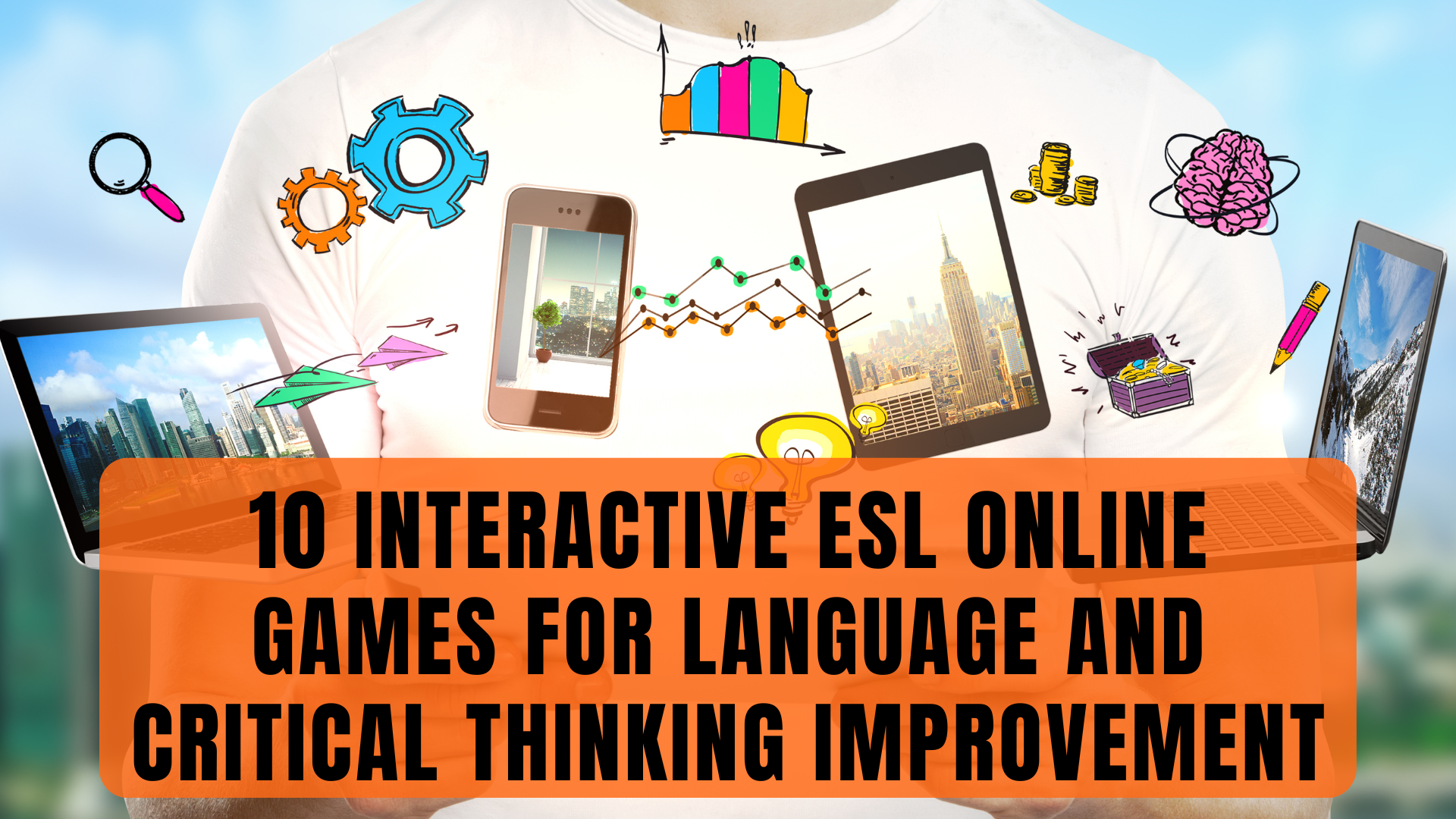
10 Interactive ESL Online Games for Language and Critical Thinking Improvement
In today’s digital age, online games have become a popular and effective tool for teaching various skills, including English as a second language. Interactive ESL online games, such as digital escape rooms , scavenger hunts , critical thinking games , and media literacy games , are not only fun and engaging but also provide students with unique opportunities to improve their language skills .
In this article, we will explore the benefits of using interactive games for language learning, and discuss how these games can help students achieve their language goals.
1. Enhanced Engagement and Motivation
Interactive games provide a dynamic and interactive environment that makes language learning more enjoyable and memorable. This can lead to increased engagement and motivation for students to continue learning.
2. Real-Life Practice
Many games simulate real-life situations . This allows students to practice their language skills in relevant and practical ways.
3. Improved Critical Thinking Skills
Games that teach critical skills , such as spotting fake news and hoaxes , and media literacy, help students improve their critical thinking and media literacy skills. These skills are essential for success in today’s digital world and will help students in their personal and academic lives.
4. Customizable and Convenient
Interactive games offer customization options, allowing students to tailor the game to their language level and learning goals. With the ability to play these games on a variety of devices, students can access language learning opportunities from anywhere and at any time.
5. Measurable Progress
Interactive ESL online games provide students with immediate feedback , allowing them to see their progress and identify areas that need improvement. This helps students stay motivated and track their progress.
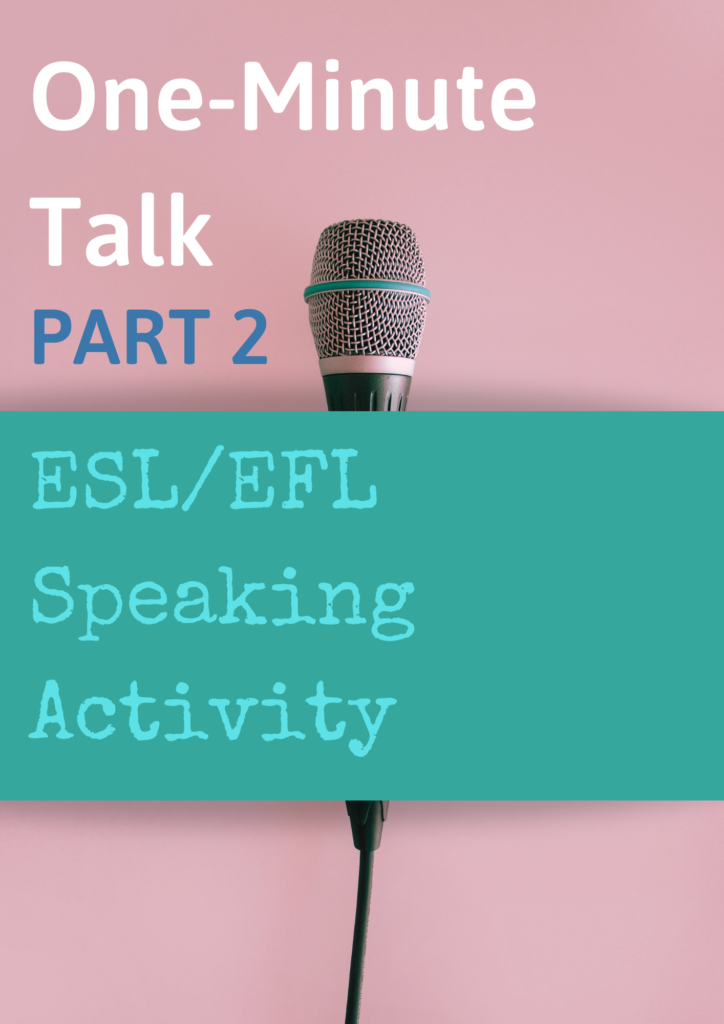
Here’s a list of 10 interactive ESL online games you should check out:
Bad news game.
The Bad News Game is all about spotting fake news and hoaxes . You’ll be presented with news articles and videos and have to figure out what’s real and what’s not. It’s a fun way to improve your critical thinking skills and learn to be a media-literate person. Get ready to be challenged and have a blast doing it!
Fake News Game
This game is similar to the Bad News Game. It will challenge you to think critically and evaluate information sources, helping you become a savvier news consumer. So, get ready to flex your brain muscles and have some fun!
Interland is a free, online multiplayer adventure game created by Google that teaches digital safety, security and citizenship skills to children. Players explore four fantastical lands, completing challenges and quests while learning how to protect their online privacy, spot fake news, and be good digital citizens.
Digital Escape Rooms
The digital escape rooms at Madison Library are a fun and exciting challenge. These online puzzles will test your problem-solving skills and critical thinking as you try to escape a virtual room within a limited time frame. Immerse yourself in a world of digital elements and clues, to make the most of your escape room experience. With a variety of themes to choose from, there’s always a new challenge waiting for you and your friends.

Escape Team
Escape Team is an online interactive game that challenges players to solve puzzles and complete tasks within a limited time frame in order to escape virtual rooms. Players must work together to find clues, decode messages, and complete challenges in order to escape each room before time runs out.
Reality Check
Reality Check teaches you to find truth online by locating the source of a story, comparing it to other sources, and using fact-checking tools and reverse image searches. Each mission presents a story from your social network feed, true, false, or in-between. Find out by clicking on magnifying glasses on the page, then decide how reliable it is and how to respond.
Spent is an online game where you play as a low-income worker trying to survive a month with limited money. You must balance daily expenses and make tough decisions that affect your finances. It’s a thought-provoking game that gives players a glimpse into the challenges faced by those living in poverty .
Trivia Crack
Trivia Crack is a fun online game to test your knowledge of different subjects . Play against others by answering trivia questions and spinning a wheel for categories like history, science, art, sports, and more.

Elevate App
Elevate is a fun online brain-training app with daily challenges to improve your memory, attention, and processing speed . Personalized to your progress, it’s perfect for students, busy professionals, or anyone looking for a mental workout.
The Meaning of Beep: Cyberbullying
This game teaches players about the effects of cyberbullying and how to stop it. Players will have fun while they learn to identify and handle cyberbullying in different digital scenarios. The game is designed to encourage positive online behavior and help players become responsible digital citizens.
Interactive ESL online games are a valuable tool for language learning. With their ability to engage and motivate students, provide real-life practice, improve critical thinking skills, and offer measurable progress, these games can help students achieve their language goals and unlock their full potential. Try incorporating interactive ESL online games into your language learning routine today and experience the benefits for yourself.
Similar resources:
47 Interactive and Online ELT Resources for Teachers
Best English Games to Play in Your ESL Classroom
Engaging Online Teaching: ESL Activities and Games
Online ESL Video Lesson Plans
Digital and Online Teaching Resources for Teachers Who Teach English from Home
Related Posts
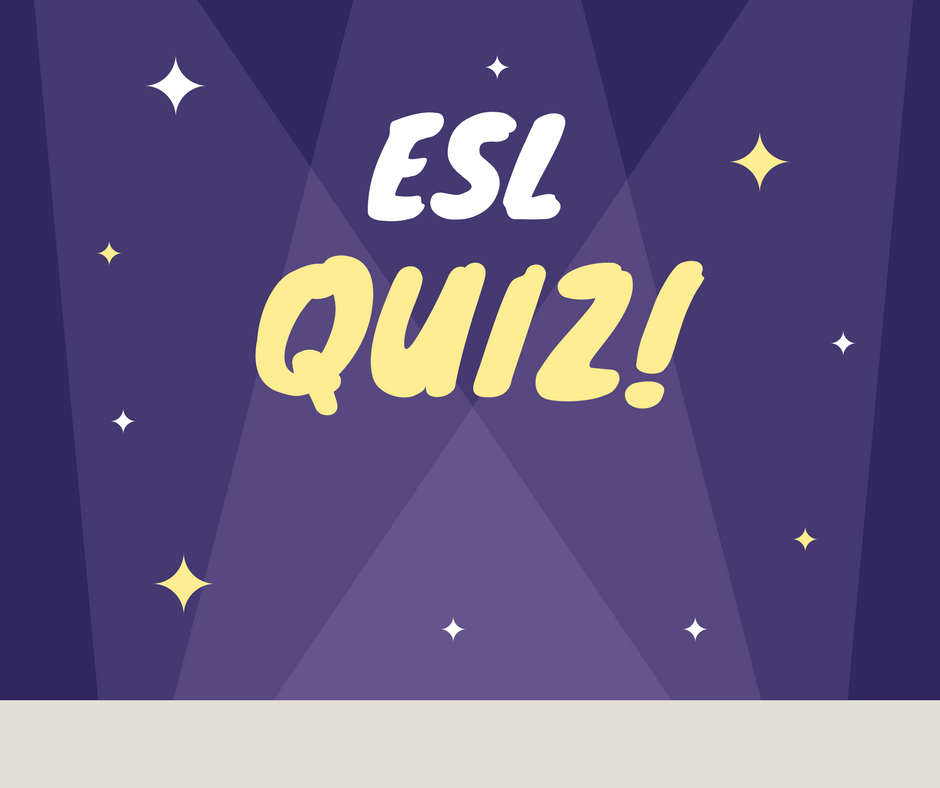
Make Game Quizzes For ESL Lessons
My younger students are very competitive and playful, and I love that about them. It is great to see that they are engaged and immersed in the activity, that they are having fun; and that they don’t even realise they are learning. I am always in need of new resources,…

6 Fun Activities Exhausted ESL Teachers Will Appreciate At The End Of The Term
I have one more week of teaching ahead of me. Three more weeks of work. There is more paperwork now than actual teaching. The kids can smell the summer holidays in the air and it shows. The teachers can barely hide how exhausted they are. And it’s hot. Scorching hot….

Media/Entertainment Vocabulary Card Game Based on Taboo.
As I mentioned in one of my previous posts 3 Board Games You Can Use In The Classroom, I love using games with my students and Taboo style cards are one of my favourite ways of revising vocabulary. The last downloadable pdf worksheet covered Travel&Holidays for Intermediate and Upper Intermediate…

ESL Problem-Solving Games

English Games to Teach Imperatives
A balanced approach to life has always been described as eight hours of rest, eight hours of work, and eight hours of play. Games typically occur during play time, but that seems to be changing. According to a report submitted to the “Education Resources Information Center” in March 2012, a game can capture a person’s attention, reduce stress, and promote fast-paced problem solving. Therefore, play time may actually serve as the best time for language acquisition among English as a Second Language (ESL) learners of all ages.
Problem Solving Just Got Exciting
According to a study in the “Journal of Educational Computing Research” published in July 2011, problem solving is a 21st century skill that requires people to enter into new settings and rapidly and efficiently figure out what has to be learned or done. While textbooks and lectures can address problem solving in isolation, the traditional approach does not give ESL learners opportunities for application of the skill. Games are an alternative approach that can fill the gap. The basic components of any game are rules, competition and fun, which creates a sense of urgency and prompts the learner to action.
Humorously Using a New Language
Building on the basic components, problem solving games are appropriate at every stage of life. The report submitted to the “Education Resources Information Center” in March 2012, described a game called “What Would You Do If?” which requires elementary ESL learners to randomly pick one hypothetical question and one unrelated answer. The learner has to bridge the question to the answer using their imagination, problem-solving skills, and their newly acquired vocabulary in a certain amount of time. While humorous, the English language learner is inferring and creating narratives. This is a simple example of gaming, but the level of complexity should fit the learners’ language level and age.
Games for Digital Natives
As age and language levels increase, the complexity of the game should also increase and may involve technology. Most adolescents, whether ESL or not, are digital natives and are accustomed to using software or the Internet for recreational purposes. Therefore, technology-based problem solving games are appropriate for early adolescents and adults. The previously mentioned study published in the “Journal of Educational Computing Research” in July 2011, described software for middle school students to play the role of a researcher charged with discovering the nature and cause of an infectious disease outbreak. Through simulation, students make inferences and experience emotions while applying their knowledge of microbiology. This type of experience is especially beneficial to ESL learners because it provides an opportunity to use vocabulary specialized to the scientific field. According to findings published in “Multicultural Education” in January 2011, ESL learners require assistance in developing specific content vocabulary in their second language to be successful in school and work.

When considering games, why reinvent the wheel? Popular games and game shows can easily be adapted for ESL problem solving. Everyone already knows the rules and can jump right in! Games like Balderdash and Scrabble are good for developing general vocabulary, and Jeopardy is useful for content. A case study published in the “International Journal of Mathematical Education in Science and Technology” in November 2010, compared two groups of introductory statistics classes. One class used the rules in "Deal or No Deal" to learn about expected value and the necessary calculations. The class used traditional methods. When given the written exam, more students that played the game passed than students that did not. According to the study, the game provided an instructional avenue that removed the fear factor and provided real-time problem solving.
Related Articles

How to Prepare Lesson Plans for the TEKS

The Importance of Media in the Classroom

Uses of Computers in Education

Ideas for Micro Teaching
The advantages of having a smart board in a high school classroom.

The Five Features of a Language-Rich Classroom

Teacher Ideas to Help a Child With Semantic Language Difficulties

Advantages & Disadvantages of GTM in TEFL
- Multicultural Education: Building English Language Learners' Academic Vocabulary Strategies & Tips
- International Journal of Mathematical Education in Science and Technology: Deal or No Deal: Using Games to Improve Student Learning, Retention, and Decision-Making
Shelley McKinley has experience as a principal, assistant principal, science teacher and central office administrator. She began writing education-related articles in 2011 and was referenced in the Journal of the National Association for Alternative Certification in 2012. McKinley holds a Doctor of Education in curriculum and instruction from Texas Southern University.
Your browser is not supported
Sorry but it looks as if your browser is out of date. To get the best experience using our site we recommend that you upgrade or switch browsers.
Find a solution
- Skip to main content
- Skip to navigation
- Macmillan English
- Onestopenglish
- Digital Shop

- Back to parent navigation item
- Sample material
- Amazing World of Animals
- Amazing World of Food
- Arts and Crafts
- Mathematics
- Transport and Communication
- Teaching Tools
- Sustainable Development and Global Citizenship
- Support for Teaching Children
- Vocabulary & Phonics
- Spelling Bee Games
- Phonics & Sounds
- The Alphabet
- Onestop Phonics: The Alphabet
- Alphabet Booklet
- Interactive Flashcards
- Warmers & Fillers
- Young Learner Games
- Stories and Poems
- Fillers & Pastimes
- Fun Fillers
- Ready for School!
- Topics & Themes
- Young Learner Topics
- Young Learner Festivals
- Festival Worksheets
- Art and Architecture
- Business and Tourism
- Geography and the Environment
- Information Technology
- Science and Nature
- Topic-based Listening Lessons
- Cambridge English
- Cambridge English: Preliminary (PET)
- Cambridge English: First (FCE)
- Cambridge English: Proficiency (CPE)
- Cambridge English: Advanced (CAE)
- General English
- News Lessons
- Topics and Themes
- Beyond (BrE)
- Beyond: Arts and Media
- Beyond: Knowledge
- Go Beyond (AmE)
- Go Beyond: Arts & Media
- Go Beyond: Knowledge
- Impressions
- Macmillan Readers
- A Time to Travel
- Life & School
- Skills for Problem Solving
- Digital Skills for Teens
- Support for Teaching Teenagers
- Games Teaching Materials
- Business and ESP
- Business Lesson Plans
- Business Skills Bank
- Business Top Trumps
- Elementary Business Lessons
- HR Management
- Business News Lessons
- ESP Lesson Plans
- Career Readiness
- Professional Communication Skills
- Cambridge English: Business (BEC)
- Everyday Life
- Celebrations
- Live from...
- Live from London
- Discussion Cards
- Writing Lesson Plans
- Life Skills
- Support for Teaching Adults
- Vocabulary Lesson Plans
- Language for...
- Vocabulary Teaching Materials
- Macmillan Dictionary Blog
- Vocabulary Infographics
- Kahoot! Quizzes
- Blog Articles
- Professional Development
- Lesson Share
- Methodology: Projects and Activities
- Methodology: Tips for Teachers
- Methodology: The World of ELT
- Advancing Learning
- Online Teaching
- More from navigation items
Speaking skills: Speaking matters
- 1 Speaking skills: Speaking matters
- 2 Speaking matters: Developing fluency
- 3 Speaking matters: Developing and dealing with accuracy
- 4 Speaking matters: Assessing speaking
- 5 Speaking matters: Personalization
- 6 Speaking matters: Problem-solving
- 7 Speaking matters: Role-play
- 8 Speaking matters: Pairwork
Speaking matters: Problem-solving
By Adrian Tennant
- No comments
This article looks at problem-solving activities and what they are like. It covers how to set them up, why it's good to use them, the disadvantages and what you should do after the activity.
Introduction
Students need a reason to speak in the classroom. Many speaking activities seem to have no aim other than to get students to talk to each other, but for what reason? By doing the activity what will they achieve? Some activities, like pairwork activities, try to create a purpose by creating an information gap - i.e. where one student has some of the information and another student the rest and, only by speaking to each other can they complete the task. However, this simple transference of information only replicates a small part of what speaking in real life is used for.
Role-plays are another favourite classroom activity designed to get students speaking, but these often focus on creating scenarios or situations where students practise functional language such as giving directions, asking for information, etc. Although this is realistic, it is still often on a level of one student having information that another student doesn't. In real life, we often speak about something when we both, or all, share a lot of the same information. This can take the form of a discussion or a debate where we have opinions, but it can also take the shape of a discussion based on having to solve a problem. In this article, we'll take a closer look at problem-solving speaking activities.
What are problem-solving activities like?
There are a number of types of problem solving activities. For the sake of simplicity I'll split them into three types:
1. The opinion problem-solving activity.
In this type of activity students are given information to discuss where there is not necessarily one right or wrong answer. This type of activity differs from a normal discussion in that there is a built-in problem within the information.
You and three friends rowed out to a small island in the middle of a lake. When you landed you forgot to tie the boat up properly and it has drifted away. Night is now approaching. It is 3km back to the shore, but one of your friends can't swim. You do not have any food with you and you don't know if anyone knows where you are. What do you do?
Students are then expected to discuss the problem and come up with a solution. To help students you can provide a set of ideas/options for them to choose from. You can also make the activity more complicated by giving each student a 'role card' with an extra piece of information on it (that might be a problem) i.e.
There is no wood on the island so you can't build a fire. At night the temperature drops to freezing .
2. The logical thinking problem-solving activity.
In this type of problem-solving activity there is usually one correct solution. To arrive at the solution the students need to discuss information they are given and logically work out what the solution is. There are two ways in which the information can be given, either split between a number of students so that they don't have the same information and they must share it, or where they all have the same information and simply have to discuss things together. In the later version a set of questions can often help students work out the answer. (See activity 2 in the 'Practical ideas' section below for a logical thinking activity).
3.The information gap problem-solving activity.
How does this differ from a normal information gap (i.e. a pairwork information gap where one student has information that the other student doesn't)? Well, the main difference is that in a normal information gap activity it is simply a matter of transferring the information, i.e. two students have a profile of a person. Student A knows the person's age and nationality, etc. Student B then asks 'How old is he?' and fills in the missing information they obtain in the correct space, etc. In a problem-solving information gap, getting the missing information is not the ultimate aim, but merely a stepping stone on the way to solving a problem.
Why use problem-solving activities?
Apart from the fact that these kinds of activities can be a lot of fun they are also very stimulating. They usually require students to communicate information to each other where the focus is on expressing ideas and opinions and not simply repeating phrases. In many ways, problem-solving activities replicate 'real' speaking in that people have a need to speak. Problem-solving activities can also be an effective way of practising language items that have been taught, i.e. both grammar and vocabulary. They are also a great way of developing students' cognitive abilities helping them to process language in a meaningful way.
Are there any disadvantages to problem-solving activities?
Yes, there are. One of the major problems is that stronger students often dominate the discussions, taking over and giving the less able students little opportunity to contribute. Often, this is due to the need for one person to organize and collate information and ideas. One way around this is to give certain students specific tasks, i.e. someone to 'chair' the discussion, someone to make sure everyone has a turn, etc.
Another disadvantage of this type of activity is that students may become frustrated when trying to solve the problem and, especially if they don't have the language skills in English, will switch to their L1. To avoid this it is important that you, the teacher, consider what language they are likely to need in order to complete the task and to pre-teach any necessary phrases, expressions or vocabulary you think they do not possess. Remember, using a problem-solving activity is not the main focus of your lesson/teaching but simply a way in providing students with a forum for using the language they have learnt.
How do you set up a problem-solving activity?
As with other speaking activities, how you set up the activity will often be the difference between a successful activity and one that doesn't work. The first thing to consider is whether the activity uses the language you want the students to practise. If not, then ask yourself why exactly you are using it. Then, it is important to look at the language that is needed and make sure that you pre-teach any new language before they start the activity. This will help the activity run smoothly with the focus being on solving the problem rather than working out the meaning of any new language. Finally, think about whether you want students to work alone to begin with and then discuss the problem with other students or whether you will start with pair or groupwork. Whenever you decide to use pair or groupwork think about who you get to work together so that there is a balance in each group.
What should I do after the activity?
Just as with roleplays, don't just move onto a different activity. If you move on immediately after the activity and don't at least discuss what happened, then students will often lose interest in problem-solving activities, or at least won't benefit to the full. There needs to be an obvious outcome and a rounding-up of the activity. Opening up the activity to a class discussion where you compare solutions is an obvious follow-up. It is also important that during the activity you note down any mistakes students made with the language and think about how you will tackle these either after the activity or in a subsequent lesson.
Some practical ideas
An opinion problem-solving activity
Here I am going to use the idea I mentioned earlier but give a few variations to show how it can be run in a number of different ways.
Variation 1
Put students in groups of 3-5 and give each group a copy (or copies) of the following handout:
Ask students to talk to each other and make a list of possible solutions. Ask them to also think about what problems they might face/encounter with each solution. i.e. If they stay on the island, where will they sleep and what will they eat? What if there is no food on the island? etc.
Variation 2
Give the students the same handout, but also give them the following options (either as part of the handout or written on the board).
- One of you swims to the shore to get help.
- Try and make a fire on the island to attract attention.
- Find somewhere to sleep for the night and then try and get off in the morning.
- Look for the boat and get one person to try and swim to it and bring it back.
- All swim back to the shore taking it in turns to help the person who can't swim.
Variation 3
Give the students the same handout, but also give each one a role card with extra information. i.e.
A logical thinking problem-solving activity
A new teacher starts working at school. In her class there are a set of triplets, Ana, Bryan and Carl. Unfortunately, the teacher can't remember which one is which, but she has some notes about the three kids.
She knows that two of the triplets are boys and one is a girl.
Carl, one of the boys, is always calm and patient.
- One of the triplets likes playing football and he has a tattoo on his arm.
One of the triplets has red hair, one brown and one blonde.
- The triplet who doesn't get angry easily has short blonde hair.
The triplet with red hair has an earring and she likes to sing.
The triplet who has a tattoo gets angry easily.
Can she work out who is who?
Students should be able to work out the answer simply with the information provided, but, if you want to help them you could also give them a set of questions to answer. e.g.
- Should the teacher have known which triplet was Ana? Why?
- Which triplet likes to sing? How do you know?
- What colour is Ana's hair?
- What else do you know about Ana?
- What kind of person is Carl?
- Does he have a tattoo?
- How do you know?
- What colour is Carl's hair?
- Does Carl like football?
- Which triplet likes football?
These questions guide students through step-by-step, enabling them to work out the answer.
An information gap problem-solving activity
A simple example of this would be to use the same worksheet as above but cut the information about the triplets into strips, put students in small groups and give each student one or two strips. Tell students they have the information between them but that they must not show their information to the other students in their group.
A new teacher starts working at school. In her class there are a set of triplets, Ana, Bryan and Carl. Unfortunately, the teacher can’t remember which one is which, but she has some notes about the three kids. Can she work out who is who?
One of the triplets likes playing football and he has a tattoo on his arm
The triplet who doesn’t get angry easily has short blonde hair.
- British English
Speaking matters: Developing fluency
Speaking matters: developing and dealing with accuracy, speaking matters: assessing speaking, speaking matters: personalization, speaking matters: role-play.

Speaking matters: Pairwork
Related articles.
Adrian Tennant gives an introduction to using pairwork for teaching speaking skills.

Elementary Business: Employee Well-being
By Karen Capel
Many companies are taking new measures that focus on employee well-being, but is it enough?

Business News Lessons: Forever Young: when is it time to step down?
By Engeli Haupt
Is it appropriate to take age into account when hiring a new CEO?
No comments yet
Only registered users can comment on this article., more from support for teaching speaking.

Pronunciation skills with Adrian Underhill: Overcoming common pronunciation challenges
By Adrian Underhill
In the last article in this series, ELT pronunciation expert Adrian Underhill looks at how to overcome common pronunciation problems.

Pronunciation skills: Consonants – consciously rediscovering the ON and OFF voice buttons
In his latest article, ELT pronunciation expert Adrian Underhill looks at consonants and how consciously rediscoving the ON and OFF voice buttons can benefit both your teaching and your students’ learning.
Pronunciation skills: Minimal pairs /θ/ and /ð/
In this video, Adrian looks at the minimal pairand and /θ/ and /ð/ and shows us how to make each sound in a simple and effective way while giving advice on how to gain control of the physicality needed to produce each sound.
Join onestopenglish today
With more than 700,000 registered users in over 100 countries around the world, Onestopenglish is the number one resource site for English language teachers, providing access to thousands of resources, including lesson plans, worksheets, audio, video and flashcards.
- Connect with us on Facebook
- Connect with us on Twitter
- Connect with us on Youtube
Onestopenglish is a teacher resource site, part of Macmillan Education, one of the world’s leading publishers of English language teaching materials.
- Privacy Policy
- Cookie policy
- Manage cookies
©Macmillan Education Limited 2023. Company number: 1755588 VAT number: 199440621
Site powered by Webvision Cloud
Problem solving with 5 Whys
- Business Skills
Asking questions


LESSON OVERVIEW
In this lesson, we want to focus on a very popular problem solving technique called 5 Whys (5W) . If your students know something about Six Sigma or Lean, they should be familiar with this technique. Otherwise, they will learn a useful method for problem solving and practise asking questions .
DISCUSSION & VIDEO
The lesson starts with a quick warm-up speaking task about problems and how students approach solving them. Then, they watch a short video introducing 5 Whys , a problem-solving method developed by Sakichi Toyoda, a Japanese inventor and industrialist, and answer the questions.
Afterwards, your students will practise using the technique based on an example. First, they need to study the example and then fill in the other graph by asking 5 why questions to get to the root cause. Answers in this task may vary. Let your students be creative there. The aim of the task is to get them familiar with using 5 Whys. Finally, in the last task, students will use the technique to find root causes for problems they’ve had at work.
RELATED LESSON PLANS
This worksheet goes well with the following lesson plans:
- How to use questioning techniques to get better answers
- Questions no one knows the answers to
Subscribe to unlock these and many other Standalone lesson with the Premium plan
Leave a Reply Cancel reply
You must be logged in to post a comment.
Browse other materials recommended for you

The golden age of podcasting
Explore the fascinating field of technology and podcasts with this lesson! After reading an article, students discuss the use of AI in podcasts, practise vocabulary to talk about the topic and discuss their ideas if they launched a 100% AI-generated podcast.

Ace your next job interview
Dive into the realm of job interviews with this lesson. Students practise job interview vocabulary, watch a video for tips, talk about what can make an interview successful and learn about the STAR approach for responding to interview questions.

Office, remote or hybrid?
With this up-to-date lesson, students discuss work life after lockdown and practise vocabulary to talk about workplace changes. They also watch a news video about companies changing the way they work and discuss different work models.

As per my last email…
Dive into the intriguing world of emailing and talk about what annoys people the most. With this lesson, students expand their vocabulary, express irritation, and analyze real-life situations.

Is a degree worth it?
Engage your students in a discussion on the ins and outs of higher education. Explore education and career-related vocabulary and work on comprehension skills by watching a news report on the job market.

How to stand out at work
Let your students share opinions on getting promoted and being noticed at work. They will discuss hypothetical situations, share experiences and comment on advice from a video.

All about branding
This is a perfect lesson for students who want to discuss brands and the idea of branding. Students learn and practise useful phrases, as well as improve their comprehension skills.

Talking about leaders
Students talk about good and bad leadership, watch an explainer video and share their experiences. Let them explain why they’d rather be a good leader or have a good leader.

Ready to go paperless?
In this lesson, students learn some vocabulary related to document management, talk about going paperless, watch a video, and work on word building learning suffixes ‘-ful’ and ‘-less’.
Is there a minimum subscription period if I choose a monthly subscription?
No, there’s no minimum required number of subscription months. You can cancel any time you want. Basically, you can sign up and then cancel your subscription the next day, which will mean you have access for 1 month and won’t be charged again.
What currencies can I pay in for my subscription?
Our default currency is USD (American dollar), but you can also pay in EUR (euro), GBP (British pound sterling) or PLN (Polish zloty). You can change the currency you want to pay in at the Pricing page before selecting a subscription plan.
LESSON PLAN FOR ENGLISH TEACHERS
Problem solving.

Level: Upper Intermediate - Advanced
Type of English: Business English
Tags: problems at work problems and solutions declaring and diagnosing a problem making suggestions Situation based
In this lesson, students learn useful language for handling and solving problems at work. Vocabulary for describing different types of problems and solutions is studied. Students then listen to several dialogues and study the expressions used by the speakers to declare and diagnose a problem as well as make suggestions and take action. At the end of the lesson, there is a role play activity in which the language from the lesson is put into practice. There are two animated videos which can be played instead of the dialogue or given to the student(s) as material to take away.
Problem-solving-Ex3
RATE THIS LESSON
Rating labels
2/5 Not very good
5/5 Excellent
Be the first to share your thoughts on this lesson
Leave a Comment
LESSON PLAN
Download MULTIMEDIA
Download audio
Download video
ADD TO FAVOURITES
COURSE PLANS
This comprehensive course plan covers the full range of language needs – listening, role play, vocabulary development.
Lesson Plans in English for Work and Life course plan
Type of English: Business English Level: Upper Intermediate - Advanced
Type of English: General English Level: Upper Intermediate - Advanced
Lesson Plans in English for Business course plan
Make your lessons unforgettable
Did you know that your students can review the target language from our worksheets with our Expemo flashcard app? To let your student know, just enter their email address below (multiple emails can be separated with a comma).

Explore More
Stay in our orbit.
Stay connected with industry news, resources for English teachers and job seekers, ELT events, and more.

Explore Topics
- Global Elt News
- Job Resources
- Industry Insights
- Teaching English Online
- Classroom Games / Activities
- Teaching English Abroad
- Professional Development

Popular Articles
- 5 Popular ESL Teaching Methods Every Teacher Should Know
- 10 Fun Ways to Use Realia in Your ESL Classroom
- How to Teach ESL Vocabulary: Top Methods for Introducing New Words
- Advice From an Expert: TEFL Interview Questions & How to Answer Them
- What Is TESOL? What Is TEFL? Which Certificate Is Better – TEFL or TESOL?

Teaching Critical Thinking Skills in the ESL Classroom
- Linda D'Argenio
- December 22, 2022

Critical thinking has become a central concept in today’s educational landscape, regardless of the subject taught. Critical thinking is not a new idea. It has been present since the time of Greek philosophers like Socrates, Plato, and Aristotle. Socrates’ famous quote, “Education is the kindling of a flame, not the filling of a vessel,” underscores the nature of learning (students are not blank slates to be filled with content by their teachers) and the significance of inquisitiveness in a true learning process, both in the ESL classroom and in the wider world of education. Teaching critical thinking skills in the ESL classroom will benefit your students throughout their language-learning journey.
In more recent times, philosopher John Dewey made critical thinking one of the cornerstones of his educational philosophy. Nowadays, educators often quote critical thinking as the most important tool to sort out the barrage of information students are exposed to in our media-dominated world , to analyze situations and elaborate solutions. Teaching critical thinking skills is an integral part of teaching 21st-century skills .

Table of Contents
What is critical thinking?
There are many definitions of critical thinking. They are not mutually exclusive but rather complementary. Some of the main ones are outlined below.
Dewey’s definition
In John Dewey’s educational theory, critical thinking examines the beliefs and preexisting knowledge that individuals use to assess situations and make decisions. If such beliefs and knowledge are faulty or unsupported, they will lead to faulty assessments and decision-making. In essence, Dewey advocated for a scientific mindset in approaching problem-solving .
Goal-directed thinking
Critical thinking is goal-directed. We question the underlying premises of our reflection process to ensure we arrive at the proper conclusions and decisions.
Critical thinking as a metacognitive process
According to Matthew Lipman, in Thinking in Education, “Reflective thinking is thinking that is aware of its own assumptions and implications as well as being conscious of the reasons and evidence that support this or that conclusion. (…) Reflective thinking is prepared to recognize the factors that make for bias, prejudice, and self-deception . It involves thinking about its procedures at the same time as it involves thinking about its subject matter” (Lipman, 2003).

Awareness of context
This is an important aspect of critical thinking. As stated by Diane Halpern in Thought and Knowledge: An Introduction to Critical Thinking , “[The critical] thinker is using skills that are thoughtful and effective for the particular context and type of thinking task” (Halpern, 1996)
What are the elements of critical thinking?
Several elements go into the process of critical thinking.
- Identifying the problem. If critical thinking is viewed mainly as a goal-oriented activity, the first element is to identify the issue or problem one wants to solve. However, the critical thinking process can be triggered simply by observation of a phenomenon that attracts our attention and warrants an explanation.
- Researching and gathering of information that is relevant to the object of inquiry. One should gather diverse information and examine contrasting points of view to achieve comprehensive knowledge on the given topic.
- Evaluation of biases. What biases can we identify in the information that has been gathered in the research phase? But also, what biases do we, as learners, bring to the information-gathering process?
- Inference. What conclusions can be derived by an examination of the information? Can we use our preexisting knowledge to help us draw conclusions?
- Assessment of contrasting arguments on an issue. One looks at a wide range of opinions and evaluates their merits.
- Decision-making. Decisions should be based on the above.

Why is critical thinking important in ESL teaching?
The teaching of critical thinking skills plays a pivotal role in language instruction. Consider the following:
Language is the primary vehicle for the expression of thought, and how we organize our thoughts is closely connected with the structure of our native language. Thus, critical thinking begins with reflecting on language. To help students understand how to effectively structure and express their thinking processes in English, ESL teachers need to incorporate critical thinking in English Language Teaching (ELT) in an inclusive and interesting way .
For ESL students to reach their personal, academic, or career goals, they need to become proficient in English and be able to think critically about issues that are important to them. Acquiring literacy in English goes hand in hand with developing the thinking skills necessary for students to progress in their personal and professional lives. Thus, teachers need to prioritize the teaching of critical thinking skills.
How do ESL students develop critical thinking skills?

Establishing an effective environment
The first step in assisting the development of critical thinking in language learning is to provide an environment in which students feel supported and willing to take risks. To express one’s thoughts in another language can be a considerable source of anxiety. Students often feel exposed and judged if they are not yet able to communicate effectively in English. Thus, the teacher should strive to minimize the “affective filter.” This concept, first introduced by Stephen Krashen, posits that students’ learning outcomes are strongly influenced by their state of mind. Students who feel nervous or anxious will be less open to learning. They will also be less willing to take the risks involved in actively participating in class activities for fear that this may expose their weaknesses.
One way to create such an environment and facilitate students’ expression is to scaffold language so students can concentrate more on the message/content and less on grammar/accuracy.
Applying context
As mentioned above, an important aspect of critical thinking is context. The information doesn’t exist in a vacuum but is always received and interpreted in a specific situational and cultural environment. Because English learners (ELs) come from diverse cultural and language backgrounds and don’t necessarily share the same background as their classmates and teacher, it is crucial for the teacher to provide a context for the information transmitted. Contextualization helps students to understand the message properly.
Asking questions
One of the best ways to stimulate critical thinking is to ask questions. According to Benjamin Bloom’s taxonomy ( Taxonomy of Educational Objectives , 1956), thinking skills are divided into lower-order and higher-order skills. Lower-order skills include knowledge, comprehension, and application; higher-order skills include analysis, synthesis, and evaluation. To stimulate critical thinking in ELT, teachers need to ask questions that address both levels of thinking processes. For additional information, read this article by the TESL Association of Ontario on developing critical thinking skills in the ESL classroom .
Watch the following clip from a BridgeUniverse Expert Series webinar to learn how to set measurable objectives based on Bloom’s Taxonomy ( watch the full webinar – and others! – here ):
How can we implement critical thinking skills in the ESL classroom?
Several activities can be used in the ESL classroom to foster critical thinking skills. Teaching critical thinking examples include:
Activities that scaffold language and facilitate students’ expression
These can be as basic as posting lists of important English function words like conjunctions, personal and demonstrative pronouns, question words, etc., in the classroom. Students can refer to these tables when they need help to express their thoughts in a less simplistic way or make explicit the logical relation between sentences (because… therefore; if… then; although… however, etc.). There are a variety of methods to introduce new vocabulary based on student age, proficiency level, and classroom experience.
Activities that encourage students to make connections between their preexisting knowledge of an issue and the new information presented
One such exercise consists of asking students to make predictions about what will happen in a story, a video, or any other context. Predictions activate the students’ preexisting knowledge and encourage them to link it with the new data, make inferences, and build hypotheses.
Critical thinking is only one of the 21st-century skills English students need to succeed. Explore all of Bridge’s 21st-Century Teaching Skills Micro-credential courses to modernize your classroom!
Change of perspective and contextualization activities.
Asking students to put themselves in someone else’s shoes is a challenging but fruitful practice that encourages them to understand and empathize with other perspectives. It creates a different cultural and emotional context or vantage point from which to consider an issue. It helps assess the merit of contrasting arguments and reach a more balanced conclusion.
One way of accomplishing this is to use a written text and ask students to rewrite it from another person’s perspective. This automatically leads students to adopt a different point of view and reflect on the context of the communication. Another is to use roleplay . This is possibly an even more effective activity. In role-play, actors tend to identify more intimately with their characters than in a written piece. There are other elements that go into acting, like body language, voice inflection, etc., and they all need to reflect the perspective of the other.
Collaborative activities
Activities that require students to collaborate also allow them to share and contrast their opinions with their peers and cooperate in problem-solving (which, after all, is one of the goals of critical thinking). Think/write-pair-share is one such activity. Students are asked to work out a problem by themselves and then share their conclusions with their peers. A collaborative approach to learning engages a variety of language skill sets, including conversational skills, problem-solving, and conflict resolution, as well as critical thinking.
In today’s educational and societal context, critical thinking has become an important tool for sorting out information, making decisions, and solving problems. Critical thinking in language learning and the ESL classroom helps students to structure and express their thoughts effectively. It is an essential skill to ensure students’ personal and professional success.
Take an in-depth look at incorporating critical thinking skills into the ESL classroom with the Bridge Micro-credential course in Promoting Critical Thinking Skills.

Linda D'Argenio
Linda D'Argenio is a native of Naples, Italy. She is a world language teacher (English, Italian, and Mandarin Chinese,) translator, and writer. She has studied and worked in Italy, Germany, China, and the U.S. In 2003, Linda earned her doctoral degree in Classical Chinese Literature from Columbia University. She has taught students at both the school and college levels. Linda lives in Brooklyn, NY.

English Current
ESL Lesson Plans, Tests, & Ideas
- North American Idioms
- Business Idioms
- Idioms Quiz
- Idiom Requests
- Proverbs Quiz & List
- Phrasal Verbs Quiz
- Basic Phrasal Verbs
- North American Idioms App
- A(n)/The: Help Understanding Articles
- The First & Second Conditional
- The Difference between 'So' & 'Too'
- The Difference between 'a few/few/a little/little'
- The Difference between "Other" & "Another"
- Check Your Level
- English Vocabulary
- Verb Tenses (Intermediate)
- Articles (A, An, The) Exercises
- Prepositions Exercises
- Irregular Verb Exercises
- Gerunds & Infinitives Exercises
- Discussion Questions
- Speech Topics
- Argumentative Essay Topics
- Top-rated Lessons
- Intermediate
- Upper-Intermediate
- Reading Lessons
- View Topic List
- Expressions for Everyday Situations
- Travel Agency Activity
- Present Progressive with Mr. Bean
- Work-related Idioms
- Adjectives to Describe Employees
- Writing for Tone, Tact, and Diplomacy
- Speaking Tactfully
- Advice on Monetizing an ESL Website
- Teaching your First Conversation Class
- How to Teach English Conversation
- Teaching Different Levels
- Teaching Grammar in Conversation Class
- Members' Home
- Update Billing Info.
- Cancel Subscription
- North American Proverbs Quiz & List
- North American Idioms Quiz
- Idioms App (Android)
- 'Be used to'" / 'Use to' / 'Get used to'
- Ergative Verbs and the Passive Voice
- Keywords & Verb Tense Exercises
- Irregular Verb List & Exercises
- Non-Progressive (State) Verbs
- Present Perfect vs. Past Simple
- Present Simple vs. Present Progressive
- Past Perfect vs. Past Simple
- Subject Verb Agreement
- The Passive Voice
- Subject & Object Relative Pronouns
- Relative Pronouns Where/When/Whose
- Commas in Adjective Clauses
- A/An and Word Sounds
- 'The' with Names of Places
- Understanding English Articles
- Article Exercises (All Levels)
- Yes/No Questions
- Wh-Questions
- How far vs. How long
- Affect vs. Effect
- A few vs. few / a little vs. little
- Boring vs. Bored
- Compliment vs. Complement
- Die vs. Dead vs. Death
- Expect vs. Suspect
- Experiences vs. Experience
- Go home vs. Go to home
- Had better vs. have to/must
- Have to vs. Have got to
- I.e. vs. E.g.
- In accordance with vs. According to
- Lay vs. Lie
- Make vs. Do
- In the meantime vs. Meanwhile
- Need vs. Require
- Notice vs. Note
- 'Other' vs 'Another'
- Pain vs. Painful vs. In Pain
- Raise vs. Rise
- So vs. Such
- So vs. So that
- Some vs. Some of / Most vs. Most of
- Sometimes vs. Sometime
- Too vs. Either vs. Neither
- Weary vs. Wary
- Who vs. Whom
- While vs. During
- While vs. When
- Wish vs. Hope
- 10 Common Writing Mistakes
- 34 Common English Mistakes
- First & Second Conditionals
- Comparative & Superlative Adjectives
- Determiners: This/That/These/Those
- Check Your English Level
- Grammar Quiz (Advanced)
- Vocabulary Test - Multiple Questions
- Vocabulary Quiz - Choose the Word
- Verb Tense Review (Intermediate)
- Verb Tense Exercises (All Levels)
- Conjunction Exercises
- List of Topics
- Business English
- Games for the ESL Classroom
- Pronunciation
- Teaching Your First Conversation Class
- How to Teach English Conversation Class
Speaking Activity: Giving Advice (Guess the Problem)
Simple speaking activity for giving advice / making suggestions (esl).
ESL Level : lower-intermediate & intermediate
Target skill : Giving advice
Class Time : 25 minutes
Summary : Students give advice to a classmate. The classmate then tries to guess what problem s/he has.
First, teach some expressions for giving advice. This activity could be done first to achieve this.

In this activity, students give advice to a classmate. The classmate, however, does not know what problem they have. After getting advice, they can try to guess what their problem was. For example:
- Student1 : You shouldn't eat late at night.
- Student2 : You ought to sleep with all the lights off.
- Student3 : You had better talk to a doctor.
- Student4 : If I were you , I would take some sleeping pills.
- Student5 : Oh! Do I have insomnia? I can't sleep, right?
- ( All): Correct!
That's the gist of the activity.
Activity Execution Possibilities
To get the list of problems that you'll use in the class, you can either make it yourself or give blank cards to your students and have them write a problem on each.
Possible problems (could also be elicited from class):
- you have insomnia
- your partner is cheating on you
- you can't find your dog
- you're addicted to computer games
- you're gaining weight
- your feet stink (smell bad)
- you're failing all your classes
- your neighbour's dog barks all night
- your parents don't like your boyfriend/girlfriend
- you are depressed
- you are homeless
You could do the activity in the following ways:
- Have one student in front of the class, with his/her back to the board. You can then write the problem on the board and the other classmates can give the advice.
- Tape a problem to the back of each students. They then walk around and try to guess their problem. When they have succeeded, then can switch their problem card with someone else's.
That's it. This is a simple activity for giving advice that is both fun and requires little preparation. You ought to give it a try.
- Matthew Barton / Creator of Englishcurrent.com
Related Pages
- Giving Advice Lesson Plan (Upper-Intermediate)
- Simple Giving Advice Speaking Activity
EnglishCurrent is happily hosted on Dreamhost . If you found this page helpful, consider a donation to our hosting bill to show your support!
4 comments on “ Speaking Activity: Giving Advice (Guess the Problem) ”
thank you! great activity!!
Nice! I’ll use them in my class! Tnx!
Thanks for the ideas!
this is the best information that I get from this site
Leave a Reply Cancel reply
Your email address will not be published. Required fields are marked *

Problem solving speaking activity

Students work in pairs or small groups trying to find solutions to 5 different problems. It is a good opportunity to practice the second conditional ( I would…, If I were in this situation …), modal verbs ( should, might, mustn’t etc.) and negotiating (agreeing/disagreeing/expressing your opinion/asking about your partner’s opinion).
To practice agreeing and disagreeing please see Problem Solving Part 2 , School Problems , Moral Dilemmas , Workplace Dilemmas and Parental Decisions activities.
Personal Experience
I have used this activity both with adult and teenage students, levels intermediate – advanced. It works well as a warm-up (giving the students just one problem) to a regular class, and may also be used during conversation classes (takes around 20 mins.) Make sure to allow some time for the groups to present and compare their ideas at the end of class.
Problem Solving
I am teaching a fifth semester, Modern Languages Program, course at the university level and I found these activities are excellent to have my students speak more and more fluently. Thanks so much for posting them.
Wonderful news, Jhon! I’m so glad to hear my ideas worked out with your students as well.
I would like to take the time and THANK YOU for the ideas and for sharing this material. I am going to use it for sure. I work with teenagers who need to practice the language a lot and when given the proper topic, get engaged in a good discussion. I find your material very useful. Thanks!
- Pingback: Problem solving speaking activity: part 2
I just discovered your website, it’s amazing. Thanks so much for sharing !
Leave a Reply Cancel reply
Your email address will not be published. Required fields are marked *
By using this form you agree with the storage and handling of your data by this website *
- Privacy Policy

Lesson Plans Digger

Learning fun!
Category Archives: "problem solving"
Secret Spies
Can’t see the video? click here ESL Secret Spies is a simple game for Kids. Its a great game to revise vocabulary and practice spelling in a fun and interactive way. Ciphers are always great fun and loved by young learners. Activity Time: 10 mins + Materials required: Scissors, paper, pens/pencils Skills practiced: Vocabulary and spelling. Level: Young learners […]
Riddles can be a great way to practice speaking with ESL students. Riddles are a fantastic way to practice vocabulary and also engage students to think outside the box. This weeks’ game is a simple “What am I?” set of riddles. These riddles are made for young learners. These can also be used with other […]
Grass Skirts
Grass skirts is a great activity to get the class up and out of their seats while still learning and revising their vocabulary. This activity is easy to set up and a great way to make revision fun. This game can be used with all levels. I have used this game with FCE exam classes […]
Enigma Enigma is a quick and simple ESL game you can put together in no time. It’s a great ESL game for teens and adults of all levels but can be easily adapted for younger learners. It’s a great activity to practice question forming and practising vocabulary from previous lessons etc. It’s also an enjoyable way of […]
How many things…
This warmer is always a fun way to get your students thinking and practicing their vocabulary. I first came across this activity in this book, which has some great ideas for mini-brain workouts for quiet or tired students. This activity is extremely easy to do and requires no pre-class preparation or materials. Activity Time: 5 – 10 […]
Recent Posts
- 18 Dice Games for the English Classroom
- 12 Halloween Activities for your ESL Classes
- ESL Christmas Worksheets and Printables
- St Patrick’s Day Quiz
- Learning Names
Tim's Free English Lesson Plans
Use them, share them, comment on them, and share my link in return.
Tag: problem solving
Another desert island task.
Saw this shared on facebook and just had to repost it, should cause some interesting debates.

Desert Island Problem Solving Speaking Activity

Follow me on twitter @ RobbioDobbio
Before you use these materials… We’ve created a new podcast aimed at B2+ level English students and teachers alike. You can listen for free at our SoundCloud page below. We have released 5 episodes so far and you can download teacher’s notes to accompany them from our Facebook page or from this blog. All comments and feedback welcome! Give us a like and a share 😉
https://www.facebook.com/2tspodcast/
Task handout:
https://skydrive.live.com/redir?resid=79CFF252BEEA0A7D!503&authkey=!ABjaGRY8sNM-iRU
Language handout:
https://skydrive.live.com/redir?resid=79CFF252BEEA0A7D!504&authkey=!AICWqGyfQ2DTrCE
It’s an old classic but as they say, the old ones are the best!
Warm up questions
What’s the most remote place you’ve ever visited?
Did you spend the night there?
Do you like camping?
Have you ever slept under the stars?
Would you consider it?
What’s the most dangerous natural environment you’ve been in? Jungle? Desert?
What things do you always take with you on holiday?
Give out desert island and language handouts and explain the situation.
You have been selected to take part in a social experiment. You and your group will be taken to a desert island in the middle of the Pacific Ocean. You will have to survive there for a year without contact with the outside world. The island has:
- Fresh water
- Banana trees
- Coconut palms
The climate is mild (not too hot, not too cold) first individually make a list of 8-10 things you think you will need to survive. Then, as a group you will have to decide on 8 things, list them in order of importance.
Students think of their own personal lists first.
In groups they first list all the possible problems they will encounter, then decide on a list of items that will help with these problems.
Students present their lists to class explaining their decisions.
Students must go into more depth about how their island will work.
Students must decide on:
- Roles and responsibilities
- Division of labour
- Justice / punishment / laws /rules
- Decision making
Students present their system to the class, other groups can ask questions.
We’re definitely going to need ________________
__________________ will be vital / essential / extremely useful / completely useless / a waste of space
I can’t live without ____________________
Making Suggestions
I think we should……………….
I reckon we ought to…………………
Why don’t we………………………..
How about / what about + gerund………………………….
Agreeing / Disagreeing
The €100,000 question, conversation topic

Put your students in groups of 3 and ask them the following question:
What would you do with €100,000?
Give them 2 minutes to share their ideas, then have them report each other’s answers to the class. (each person reports someone else from their group’s answer)
Did anyone give it to charity?
Give out the following handout:
https://skydrive.live.com/redir?resid=79CFF252BEEA0A7D!452&authkey=!AB2H6x3IinOC6wE
In their groups students discuss the problem and then present their ideas to the class.
As a wrap up ask the students which suggestions they thought were the best, see if they can come to an agreement as a class on how to give the money away.
A long lost aunt that you didn’t know you had has recently passed away. In her will she left your group €100,000 with a note saying it should be given away to “make the world a better place.” Decide in your groups who you are going to give it to.
I think we should……………….
I reckon we ought to…………………
Why don’t we………………………..
How about / what about + gerund………………………….
- B2 speaking
Dealing with a problem
In this video, Vanya goes to Yuna with a problem. Listen to the language they use for dealing with a problem and practise saying the useful phrases.
Do the preparation exercise first. Then watch the video and do the exercises to check your understanding and practise the language.
Preparation
Speaking B2: Dealing with a problem – preparation
Ana : Hi! I'm Ana. Welcome to What to Say !
Do you know what to say when you need to deal with a problem? Listen out for useful language for dealing with a problem. Then, we'll practise saying the new phrases – after this.
Vanya : Yuna!
Yuna : Oh, morning!
Vanya : I've got a bit of a problem.
Yuna : What's wrong?
Vanya : Can we talk in private?
Yuna : Of course.
Yuna : Right, so, what's the matter?
Vanya : Well, I've made a mistake. A big mistake.
Yuna : OK. I'm sure we can work it out.
Vanya : It was such a silly thing to do!
Yuna : I'm getting worried now. What's going on here?
Vanya : OK. It was late last night and I was tired. I wasn't concentrating and I accidentally used my company credit card instead of my own to buy something!
Yuna : Don't worry, these things happen. There's a procedure to deal with this. How much did you spend?
Vanya : It was quite expensive.
Yuna : How expensive?
Vanya : It was very expensive.
Yuna : Vanya, how expensive?
Vanya : £3,782 … and 56 pence.
Yuna : What? You spent £3,782?!
Vanya : … and 56 pence.
Yuna : What was it? Vanya?
Vanya : Just a weekend break! I just like a really nice hotel!
Yuna : OK, I see. Thanks for letting me know.
Vanya : Ah! I feel so much better now I've told you. Please don't tell Noelia.
Yuna : Oh, I'm definitely going to tell her!
Noelia : Hi!
Vanya : Hi!
Ana : Hello again! Wow, that's a lot of money for a weekend break. So, did you notice the useful phrases used for dealing with a problem? Listen to me and then repeat.
What's wrong?
I've got a bit of a problem.
Could we talk in private?
What's the matter?
I've made a mistake.
I'm sure we can work it out.
Don't worry, these things happen.
Thanks for letting me know.
I feel so much better now I've told you.
Ana : Try and use some of these phrases the next time you need to deal with a problem in English. Bye for now!
Speaking B2: Dealing with a problem – 1
Speaking B2: Dealing with a problem – 2
Speaking B2: Dealing with a problem – 3
When was the last time you helped someone with a problem at work?
Language level
Well, at work usually we deal with issues all the time. Since our job is to help others to understand a product features and functionalities, we are solving problems all the time. One of the things I like the most of my job is that we all are always available to lend a hand when it is needed.
- Log in or register to post comments
The last time I helped someone was yesterday. It was something related to my parents and I'm still working on that issue wish me luck!
Good luck, I hope everything is getting better.
Currently, I don't have a job, but sometimes I also help my classmates at university when they are absent. For example, I will send them the curriculum of the lesson that the teacher is teaching that day.
I used to help my coworkers, colleagues, sisters and friends dealing with their problems by giving them some tips form my experience, and reciprocally I receive help from them and i don't hesitate a second to ask for help when I'am in a tough situation. I remember once my sister have deleted all data on her phone and she didn't have a clue how to get them back, so I suggested to install a recovery application but it didn't work, i took her to a friend who has a remarkable backgound in this field and thanks to him he fixed the problem and recovered all her important data.
The last time I helped someone with a problem was at school. One of my colleagues had a hard time planning for his studies effectively, so I told him about my studying routine, hoping that it will help him know what he was doing wrong.
Today I helped my colleague and explained her how the calculation should be done.
actually i don't work yet but i used to help my classmates at the university. I sent them what the teacher mentioned in the previous lesson. Thank to that, they could complete the assignment on time.
i don´t work yet but i help my colleagues at school with their homeworks or with classes that they missed
Well the day before yesterday when there was no network in the office available. Connecting with internet provider and our IT helpdesk helped to solve the issue.
Online courses

Group and one-to-one classes with expert teachers.

Learn English in your own time, at your own pace.

One-to-one sessions focused on a personal plan.

Get the score you need with private and group classes.
ESL Activities
ESL Games, Activities, Lesson Plans, Jobs & More
in Listening · Reading · Speaking · Writing
Second Conditional Activities, Games, Worksheets & Questions
If you’re looking for everything teaching the second conditional, you’re in the right place. We have 2nd conditional games, activities, lesson plans, and worksheets. You can also see some second conditional sentences and questions. Keep on reading!

2nd conditional activities and games
What is the Second Conditional?
In case you need a small review about what the second conditional is, it’s used to imagine a present or future situation that is impossible or unlikely.
For example, “If I won the lottery, I’d buy a big house.” Winning the lottery is very unlikely to happen!
The structure can change slightly, depending on the situation but is usually: if + past simple —> would + infinitive.
Second Conditional ESL Activities and Games
Let’s get into the best ESL 2nd conditional games to use in class with all ages.
#1: Concentration
A nice option for a fun game related to this grammar point is concentration. It’s a serious memory game.
Make cards, each with one half of a corresponding 2nd conditional sentence. Students play in small groups and have to match the cards to see who can get the most points. Check it out:
ESL Concentration Game .
#2: Is That Sentence Correct?
This is a nice activity when the grammar in terms of conjugations and word order is a little bit tricky. Students have to decide if the statement or question is incorrect. If correct, they leave it. If incorrect, they can change it to make it correct.
To level up the difficulty, they can answer the question or write the corresponding statement to a question. Find out more:
Is that Sentence Correct?
#3: Vocabulary Auction
#4: Man/Woman on the Street Interview Activity
This activity takes something usual (talking with a partner) and makes it way more interesting and fun. Students can cone up with some questions using the target vocabulary and then get to interviewing. Find out more about it:
Man/Woman on the Street Interview.
#5: Dictogloss
This is a nice activity for higher-level students. Find, or write a passage with some examples of the target grammar.
Put students into pairs and read it out at a fast pace for the level of the students. They can take notes and then compare what they have with a partner. The goal is to recreate what they just heard. Read it again and students do the same. Finally, they can compare what they have with the original version. Check it out:
#6: Fill in the Blank Games
The grammar of these kinds of sentences can be a wee bit tricky. That’s why it’s ideal to use some fill in the blank activities and games until students learn the ropes a little bit. Take a look at some of my top options:
Fill in the Blank Games .
#7: Plan an ESL Speaking Lesson for the 2nd Conditional
Just ask my students and they’ll tell you how much I love surveys! They work perfectly for the 2nd conditional. Find out howe easy it is to make your own here:
ESL Survey Activity .
#9: Journalling
There are lots of nice 2nd conditional questions that students could write about in a journal entry. For example, what they’d do if they won the lottery, or what they’d change about themselves. Check out this activity:
ESL Journalling.
#10: Mixed Up Sentences
This is a nice option when there is some tricky things in terms of word order when making a grammatically correct sentence. Mix up some sentences and students have to race to unscramble them. Check it out:
ESL Mixed Up Sentences .
#11: Flyswatter
Write down some clauses from the second half of a 2nd conditional sentence on the board. Then, say the first half of the sentence and students have to race to be the first person to slap the correct one from the whiteboard.
It’s the ultimate activity for creating some fun and excitement in the class. Learn more about it:
Flyswatter ESL Game .
#12: Running Dictation
#13: Finish the Sentence
Give students some hypothetical sentence starters using the target grammar and have them finish the sentence. This makes a really nice homework assignment, or for an exam.
#14: Use a Reading Lesson Plan
It’s easy to make your own reading lesson to target just about any grammar point, including this one! Find a passage with plenty of examples of the second conditional, and then design an entire lesson around it. It really isn’t that difficult! Check out all the steps right here:
How to Plan an ESL Reading Lesson .
#15: Solve a Problem
Think about some hypothetical situations are unlikely to happen. For example, you’re on a deserted island with cans of food but no can opener. Then, students have to work together in groups to come up with a solution. The class can vote on their favourite one.
#16: If I Were President…
Have students make a short presentation about what they’d do if they were the president of your country. The class can vote on who would do the best job.
#17: Agony Aunt
Have students think about a small problem and then get some advice from their classmates. People can start off the advice with, “If I were you, I would . . .”
#18: What Would You Do?
Present various hypothetical situations to students and ask them to discuss what they would do if those situations occurred. For example, “What would you do if you won a million dollars?” This activity promotes critical thinking and encourages students to use the second conditional to express their responses.
#19: Picture Prompts
Show students a series of pictures depicting different scenarios. Ask them to create sentences or short stories using the second conditional based on the images. This activity helps develop storytelling skills and reinforces the use of the second conditional in context.
#20: Problem-Solving Scenarios
Provide students with problem-solving situations, and ask them to come up with solutions using the second conditional. For example, “If you missed the bus, what would you do?” This activity encourages creative thinking and promotes language production.
#21: If I Had a Time Machine” Writing
Ask students to imagine having a time machine and write a paragraph or short essay about where they would go and what they would do if they had the opportunity. This activity allows students to practice using the second conditional in a written format.
#22: Conditional Chain Game
Have students sit in a circle. Start with a conditional statement using the second conditional, such as “If I won the lottery, I would travel the world.” The next student must build upon that sentence, using the second conditional, and so on. This game fosters fluency and creativity in constructing conditional sentences.
#23: Song Lyrics Analysis
Choose a song that contains examples of the second conditional. Provide the lyrics with the conditional sentences removed and ask students to fill in the missing parts. Then, play the song and have them listen and sing along while paying attention to the correct conditional usage.
Second Conditional Worksheets
If you’re a teacher, then you already know how much time it can save to use materials that others have created. Here are some fo the top picks for 2nd conditional worksheets.
ISL Collective
Live Worksheets
ESL 2nd Conditional Lesson Plans
Have a look at some of my favourite options for 2nd conditional ESL lessons for all ages.
Lingua House
Games 4 ESL
Second Conditional Questions
Here are some conversation questions for the second conditional.
- If you could change once thing about yourself, what would you chance?
- If you changed your name, what would you choose?
- If you could go back in time, what era would you go to?
- If you could be invisible for a day, what would you do?
Second Conditional Sentences
Here are some example sentences using the 2nd conditional.
- If I won the lottery, I’d buy a Ferrari.
- I’d go out way more often if I lived in a bigger city.
- If I were rich, I’d travel the world.
- She would probably pass her driving test, if she practiced.
- If I had his phone number, I’d call him to ask him out on a date.
If you’re looking for more conditionals, have a look here: Zero Conditional Activities .
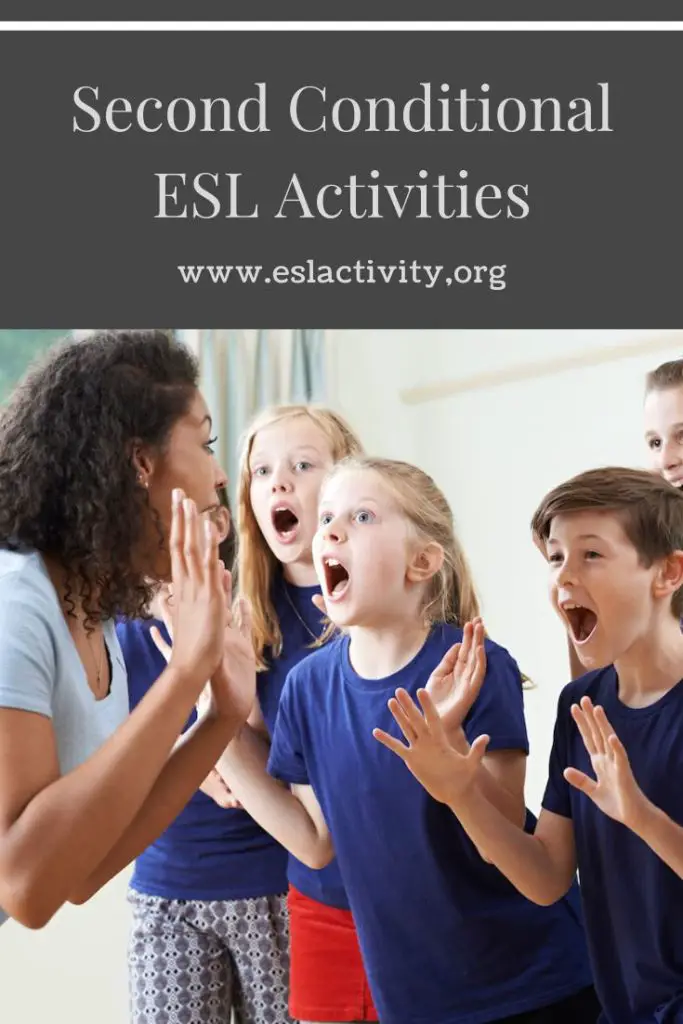
ESL 2nd conditional
There are a number of questions that people have about teaching conditionals. Here are the answers to some of the most common ones.
How do you teach the second conditional?
To teach the second conditional, first set the context. For example, winning the lottery. Then, show students the forms related to this. Do some controlled and then some freer practice.
How do you explain the second conditional?
To explain the second conditional, you can tell students that it deals with a present or future situation that is very unlikely to ever happen. For example, meeting a famous person randomly on the street.
What’s the difference between the first and second conditional?
The main difference between the first conditional and the second conditional is how likely the thing is to happen. If it’s likely, use the 1st conditional. If unlikely, use the 2nd.
What’s the difference between the second and the third conditional?
The second conditional deals with present or future things that are unlikely to happen. The third conditional refers to past consequences.
More Ideas for Teaching English Grammar

- Amazon Kindle Edition
- Bolen, Jackie (Author)
- English (Publication Language)
- 87 Pages - 10/24/2019 (Publication Date)
The key to better English classes is a wide variety of engaging and interactive games and activities. This book will help you get there in style: 39 No-Prep, Low-Prep ESL Grammar Activities, and Games .

Tips for Teaching the Second Conditional
Teaching conditionals to ESL students can be challenging, but with the right approach, it can become engaging and effective. Here are some tips to help you teach conditionals.
Start with Real-Life Examples
Begin by introducing conditionals using real-life situations that students can relate to. Use examples that illustrate the cause-and-effect relationship, such as “If it rains, we will stay indoors” or “If you study hard, you will pass the exam.” This helps students understand the concept in a practical context.
Use Visuals and Realia
Utilize visual aids, real objects, or pictures to support the understanding of conditionals. Use timelines or flowcharts to visually represent the structure of different conditional forms. Visual representations can make abstract concepts more concrete and easier to comprehend.
Present One Conditional Form at a Time
Teach each conditional form (zero, first, second, third) separately, focusing on its structure and usage. Introduce the specific verb tenses, such as present simple, will + base verb, or past simple, associated with each conditional form.
Provide Clear Explanations
Offer clear explanations of the rules and structures of each conditional form. Break down the components, including the if-clause (condition) and the result clause (consequence). Highlight the differences between the forms and when to use them.
Practice with Contextualized Activities
Engage students in contextualized activities that require the use of conditionals. Create situations or scenarios where students have to apply the correct conditional form. This can include role-plays, problem-solving tasks, or discussions about hypothetical situations.
Use Authentic Materials
Incorporate authentic materials, such as songs, videos, news articles, or short stories, that contain examples of conditionals. This exposes students to the language used in real contexts and helps reinforce their understanding of conditionals.
Provide Structured Practice
Offer structured exercises and worksheets for students to practice forming and using conditionals. Include a variety of practice activities, such as gap-filling exercises, sentence transformations, or completing dialogue exercises. Gradually increase the complexity of the exercises as students become more comfortable with the conditional forms.
Offer Error Correction and Feedback
Monitor students’ use of conditionals and provide corrective feedback. Address common errors and misconceptions to help students improve their accuracy. Encourage peer review and self-correction to foster independent learning.
Encourage Speaking and Writing Activities
Provide ample opportunities for students to practice using conditionals in speaking and writing tasks. Assign discussion topics or writing prompts that require the use of conditionals to express opinions, make predictions, or discuss hypothetical situations.
Review and Reinforce
Regularly review previously taught conditional forms to reinforce students’ understanding. Incorporate quick review activities, quizzes, or games to keep the concepts fresh in their minds.
Teaching the 2nd Conditional: Join the Conversation
Do you have any tips or tricks for teaching conditionals? Leave a comment and let us know. We’d love to hear from you.
Last update on 2022-07-17 / Affiliate links / Images from Amazon Product Advertising API
About Jackie
Jackie Bolen has been teaching English for more than 15 years to students in South Korea and Canada. She's taught all ages, levels and kinds of TEFL classes. She holds an MA degree, along with the Celta and Delta English teaching certifications.
Jackie is the author of more than 60 books for English teachers and English learners, including Business English Vocabulary Builder and 39 No-Prep/Low-Prep ESL Speaking Activities for Teenagers and Adults . She loves to share her ESL games, activities, teaching tips, and more with other teachers throughout the world.
You can find her on social media at: YouTube Facebook Pinterest TikTok LinkedIn Instagram
Top Selling ESL Activity Book

As an Amazon Associate, I earn from qualifying purchases.
More ESL Activities and Games
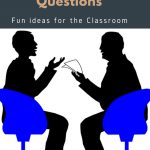
Conversation Questions for ESL: 67 Topics x 15 Questions
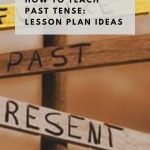
Teach Past Tense: ESL Activities, Games, Lesson Plans & More

Buy Nothing Day ESL Activities, Games, Lessons & Worksheets

20 Valentine’s Day Phrases and Idioms | Romantic English Expressions
About, contact, privacy policy.
Best-selling author and English teacher Jackie Bolen has been talking ESL activities and games since 2015. The goal is to bring you the best ideas, lesson plans, and activity recommendations for your TEFL classes.
Get in touch: About + Contact
Privacy Policy and Terms of Use
Email: [email protected]
Address: 2436 Kelly Ave, Port Coquitlam, Canada
Improve your English. Speak with confidence!
- Free Mini Course

- Posted in in ESL Conversation Questions
70 fun questions about games and gaming
- Posted by by Cameron Smith
- January 26, 2023
- Updated April 20, 2023
Musician and avid gamer Ezra Koenig once famously said: “Some people say video games rot your brain, but I think they work different muscles that maybe you don’t normally use.”
As gamers ourselves, we couldn’t agree more. Gaming is a lot of fun to talk about. And if you have if you have any gamers in your classroom or life, this list of conversation questions about games and gaming will be a great way to get them talking and practicing their English speaking skills!
70 questions about games and gaming
- What video game are you currently playing?
- How much time do you spend playing games per week?
- What is your favorite video game of all time?
- Who is your favorite video game character?
- What is your favorite video game series?
- What is the worst video game you’ve ever played?
- Have you ever played a virtual reality game?
- What type of video games do you prefer: first-person shooter, action-adventure, or RPG?
- Are you a console or PC gamer?
- Have you ever competed in a video game tournament?
- What difficulty level do you like to play games at? Easy, normal, or hard?
- Have you ever completed a video game on the hardest difficulty level?
- What is the most challenging video game you’ve ever played?
- Do you prefer playing single-player or multiplayer games?
- Have you ever created your own video game?
- Have you ever wanted to create your own video game?
- Do you prefer playing video games on a TV or monitor?
- Have you ever tried playing a mobile game on your phone or tablet?
- What is the best video game you’ve ever played on a mobile device?
- What is the best video game you’ve ever played on a PC?
- What is the best video game you’ve ever played on a console?
- What is the best video game you’ve ever played on a handheld console?
- What are your thoughts on the latest generation of video game consoles?
- Have you ever completed a video game 100%?
- What is your favorite video game genre? (e.g. racing, adventure, sports, puzzle)
- Have you ever played a video game that you couldn’t finish?
- Have you ever bought a video game just for its story?
- What movie or TV show needs to be turned into a video game?
- What video game are you looking forward to playing in the future?
- What is the best video game soundtrack you’ve ever heard?
- Do you prefer playing video games alone or with friends?
- What is your favorite game mode in multiplayer games?
- Have you ever played a video game in a language other than your native language?
- What is the most expensive video game you’ve ever bought?
- What is the best video game you’ve ever played on a portable console?
- Have you ever played a video game that made you cry?
- What is the best video game adaptation of a book or comic?
- Have you ever played a video game with a friend remotely?
- What is your favorite video game series from your childhood?
- What is your least favorite video game from your childhood?
- Did you grow to love that game when you became an adult?
- What is the longest time you’ve spent playing a video game in one sitting?
- Have you ever played a video game that you found too difficult?
- Have you ever played a video game that you found too easy?
- Have you ever played a video game that you found too scary?
- Have you ever played a video game that you found too violent?
- Have you ever played a video game that you couldn’t put down for hours?
- Have you ever played a video game that you didn’t understand at first but grew to love?
- Have you ever played a video game that you found boring?
- Have you ever played a video game that you found too complicated?
- Have you ever played a video game that you found too simple?
- Have you ever played a video game that you felt was not given enough credit?
- Do you prefer playing with others (online gaming) or solo (offline gaming)?
- What are some good games for two players?
- Have you ever felt sad after finishing a game?
- Have you ever played a game that annoyed you?
- Have you ever played a video game that you felt was ahead of its time?
- Do you think it’s okay for grown adults to play video games?
- Name a game you thought you would hate but ended up loving.
- How have video games evolved since they were invented?
- Why do some people love video games, while others hate them?
- Do you like games that involve physical movement? Dancing games, VR games, etc.
- Do you think that video games are addictive? Why or why not?
- Have you ever spent any time watching Esports?
- Would you like to become a professional Esports player?
- Do you watch streamers play video games live (e.g. Twitch)?
- Have you ever followed a video game walkthrough on YouTube?
- If you could only choose one, would you pick Playstation, Xbox, or Nintendo?
- If you had to live in one of the video games you’ve played, which one would it be?
- Are you bad at any specific games or game genres?
What ESL Discussion Topics and ESL conversation questions should we write about next? Let us know in the comments!
Get free English lessons via email
Subscribe to my newsletter and get English lessons & helpful resources once a week!
Unsubscribe anytime. For more details, review our Privacy Policy .
I agree to receive updates & promotions.
You have successfully joined our subscriber list.
Cameron Smith
I'm an English Communication Coach based in Vancouver, Canada. I'm on a mission to help millions of people speak English with confidence. Thanks for visiting this site! If you want longer video content, please follow me on YouTube for fun English lessons and helpful learning resources!
Post navigation

90 ESL conversation questions about animals
- January 25, 2023

30 ESL conversation questions about soccer and football
- January 27, 2023
Leave a Reply Cancel reply
Your email address will not be published. Required fields are marked *
Save my name, email, and website in this browser for the next time I comment.

IMAGES
VIDEO
COMMENTS
ESL Critical Thinking and Problem-Solving Activity - Speaking: Ranking, Guided Discussion, Guessing, Communicative Practice - Group Work - Upper-intermediate (B2) - 30 minutes. In this communicative critical thinking and problem-solving activity, students guess what criteria was used to put a list of ten jobs in order.
#19: Problem Solving. Present a real-life problem or challenge related to the lesson content and have students brainstorm possible solutions individually or in groups. Encourage them to think creatively and consider multiple perspectives. ... She loves to share her ESL games, activities, teaching tips, and more with other teachers throughout ...
thinking and problem-solving skills to survive being stranded on a desert island. Procedure Set the scene by drawing a boat on the board. Tell the students to imagine that they are on the boat and to suggest what they are doing there. Then, draw lightning on the board. Explain that the boat has been hit by a storm and has started taking on water.
4. Solving Puzzles : Exploration Problem Solving Activities. Solving puzzles is a fun way to develop the critical thinking skills of students. It requires them to think outside the box, look at things from different perspectives, and come up with unique solutions.
3. Improved Critical Thinking Skills. Games that teach critical skills, such as spotting fake news and hoaxes, and media literacy, help students improve their critical thinking and media literacy skills. These skills are essential for success in today's digital world and will help students in their personal and academic lives. 4.
Popular games and game shows can easily be adapted for ESL problem solving. Everyone already knows the rules and can jump right in! Games like Balderdash and Scrabble are good for developing general vocabulary, and Jeopardy is useful for content. A case study published in the "International Journal of Mathematical Education in Science and ...
80 Problem Solving English ESL worksheets pdf & doc. SORT BY. Most popular. TIME PERIOD. All-time. rachel777. Problem Solving. Students must work i. 1407 uses. audreygumbo. Problem solving work. grade 2 problems. 542 uses. jazz47. NUMBERS PROBLEM SOLV. the object of this a. 75 uses. Mulle. Reading with Problem. Text bites with prob. 2891 uses ...
They usually require students to communicate information to each other where the focus is on expressing ideas and opinions and not simply repeating phrases. In many ways, problem-solving activities replicate 'real' speaking in that people have a need to speak. Problem-solving activities can also be an effective way of practising language items ...
First, they need to study the example and then fill in the other graph by asking 5 why questions to get to the root cause. Answers in this task may vary. Let your students be creative there. The aim of the task is to get them familiar with using 5 Whys. Finally, in the last task, students will use the technique to find root causes for problems ...
A selection of English ESL problem solving video quizzes. problem solving. Worksheets. Powerpoints. Video Lessons. Search. Filters. 116 Problem solving English ESL video lessons. SORT BY. Most popular. ... Problem Solving in T. Watch this TEDTalk a. 19 uses. Israahilal. Mr. Bean - TV Not Wo. Students choose the. 22052 uses. ClaudineNZ. Heinz ...
Problem solving. In this lesson, students learn useful language for handling and solving problems at work. Vocabulary for describing different types of problems and solutions is studied. Students then listen to several dialogues and study the expressions used by the speakers to declare and diagnose a problem as well as make suggestions and take ...
Several activities can be used in the ESL classroom to foster critical thinking skills. Teaching critical thinking examples include: ... problem-solving, and conflict resolution, as well as critical thinking. A major component of critical thinking is understanding the perspective of the person you are communicating with. Teachers should have a ...
These problem-solving scenarios for ESL have been designed by teachers, for your children's needs. Once downloaded, you'll find 3 different problems; children can either work independently or in a group to come up with 3 possible solutions. Before starting this activity, you can put a scenario on the board at the front of the classroom, asking pupils to turn to their talking partner to ...
In this activity, students give advice to a classmate. The classmate, however, does not know what problem they have. After getting advice, they can try to guess what their problem was. For example: Student1: You shouldn't eat late at night. Student2: You ought to sleep with all the lights off. Student3: You had better talk to a doctor.
Problem solving #2 - The Sinking Ship. ksfredriksen. 6251. 74. 47. 1. 1/2. Let's do English ESL discussion starters, speaking cards. This is an oral activity where your students discuss which passengers deserve a place in the lifeboat….
On this page, you will find engaging teaching activities, topic-based lessons and worksheets to help students practice and improve their critical thinking and problem-solving skills. The resources in this section also combine critical thinking and problem-solving with other useful skills such as negotiating, prioritizing, ordering, analyzing ...
The aim of this speaking activity is to practice problem-solving in English and brainstorm solutions to five different problems. It is perfect for conversation classes, bigger and smaller groups, levels intermediate and above.. The Task. Students work in pairs or small groups trying to find solutions to 5 different problems.
Method. 1. Write words on pieces of papers that you want the students to revise. 2. Cut up the words up into letters and give them to the students to put back into the correct order. Students write down the words that they decipher. 3. Get the students to make their own ciphers and swap them with the other students.
Developing Problem-Solving Skills: Games challenge me to think critically and solve problems within the game's context, which helps me sharpen my problem-solving skills and become a better thinker overall. ... For ESL classes, focus on words that could be tough to spell, new tenses, or some unique or interesting word or phrase. ...
Part 1: Give out desert island and language handouts and explain the situation. Task: You have been selected to take part in a social experiment. You and your group will be taken to a desert island in the middle of the Pacific Ocean. You will have to survive there for a year without contact with the outside world.
Check your browser's developer console for more details. In this video, Vanya goes to Yuna with a problem. Listen to the language they use for dealing with a problem and practise saying the useful phrases. Do the preparation exercise first. Then watch the video and do the exercises to check your understanding and practise the language.
Second Conditional ESL Activities and Games. Let's get into the best ESL 2nd conditional games to use in class with all ages. #1: Concentration ... #20: Problem-Solving Scenarios. Provide students with problem-solving situations, and ask them to come up with solutions using the second conditional. For example, "If you missed the bus, what ...
70 fun questions about games and gaming. Musician and avid gamer Ezra Koenig once famously said: "Some people say video games rot your brain, but I think they work different muscles that maybe you don't normally use.". As gamers ourselves, we couldn't agree more. Gaming is a lot of fun to talk about.